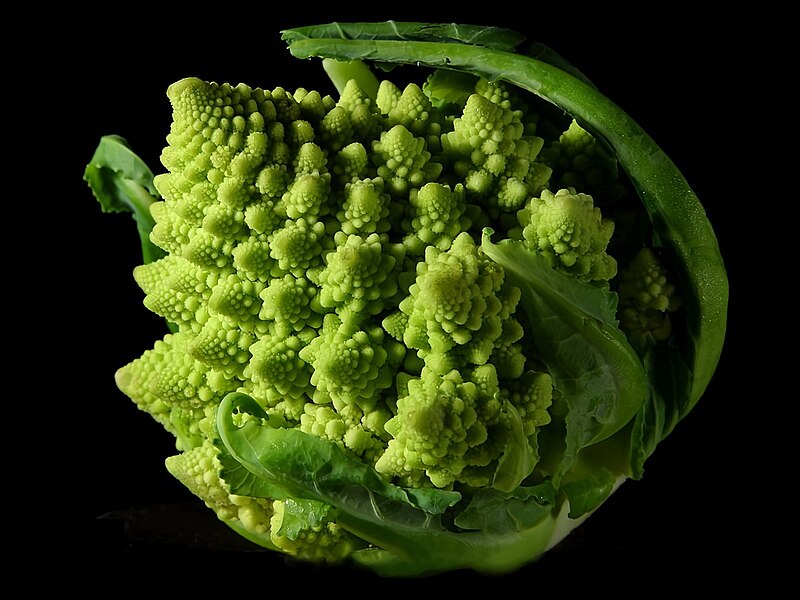Fractal Romanesco Broccoli
Romanesco broccoli resembles a cauliflower, but is of a light green colour and the inflorescence (the bud) has an approximate self-similar character, with the branched meristems making a logarithmic spiral. In this sense the broccoli’s shape approximates a natural fractal; each bud is composed of a series of smaller buds, all arranged in yet another logarithmic spiral. This self-similar pattern continues at several smaller levels.

Cloning
A meristem is the tissue in most plants consisting of undifferentiated cells (meristematic cells), found in zones of the plant where growth can take place.
The meristematic cells give rise to various organs of the plant, and keep the plant growing.
Under appropriate conditions, each shoot meristem can develop into a complete new plant or clone. Such new plants can be grown from shoot cuttings that contain an apical meristem. Root apical meristems are not readily cloned, however. This cloning is called asexual reproduction or vegetative reproduction and is widely practiced in horticulture to mass-produce plants of a desirable genotype. This process is also known as mericloning.
Propagating through cuttings is another form of vegetative propagation that initiates root or shoot production from secondary meristematic cambial cells. This explains why basal ‘wounding’ of shoot-borne cuttings often aids root formation.
You can try this cloning process with almost any brassica - broccoli, cauliflower, cabbage, collards or kale.
By the way …
Did you know that self-similarity is the basis for what we perceive as beauty? Even music is partly self-similar!
See also: